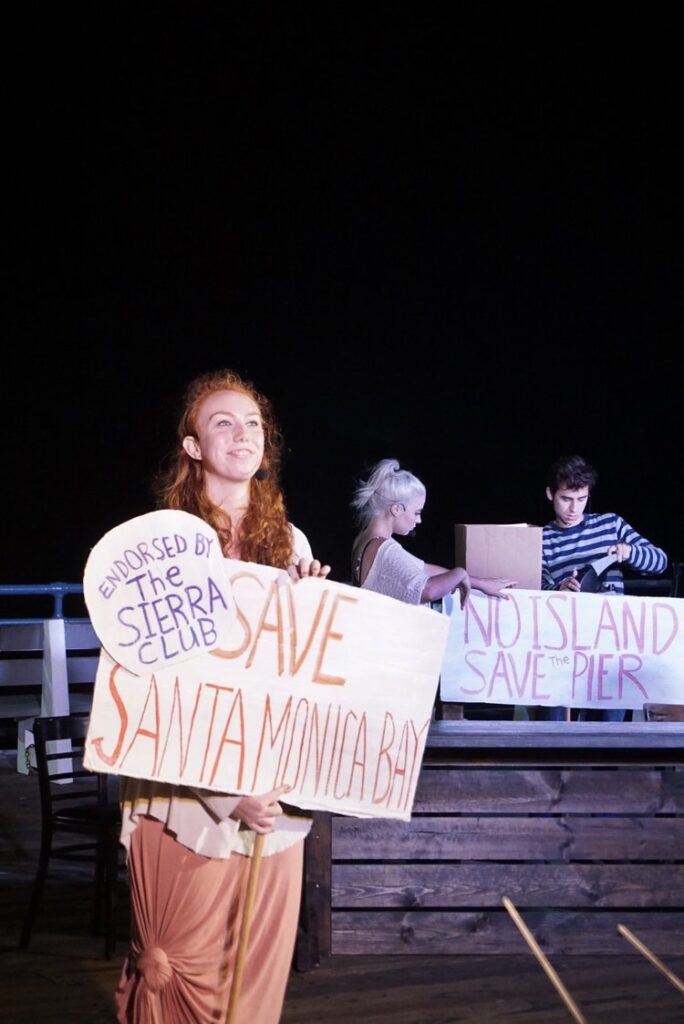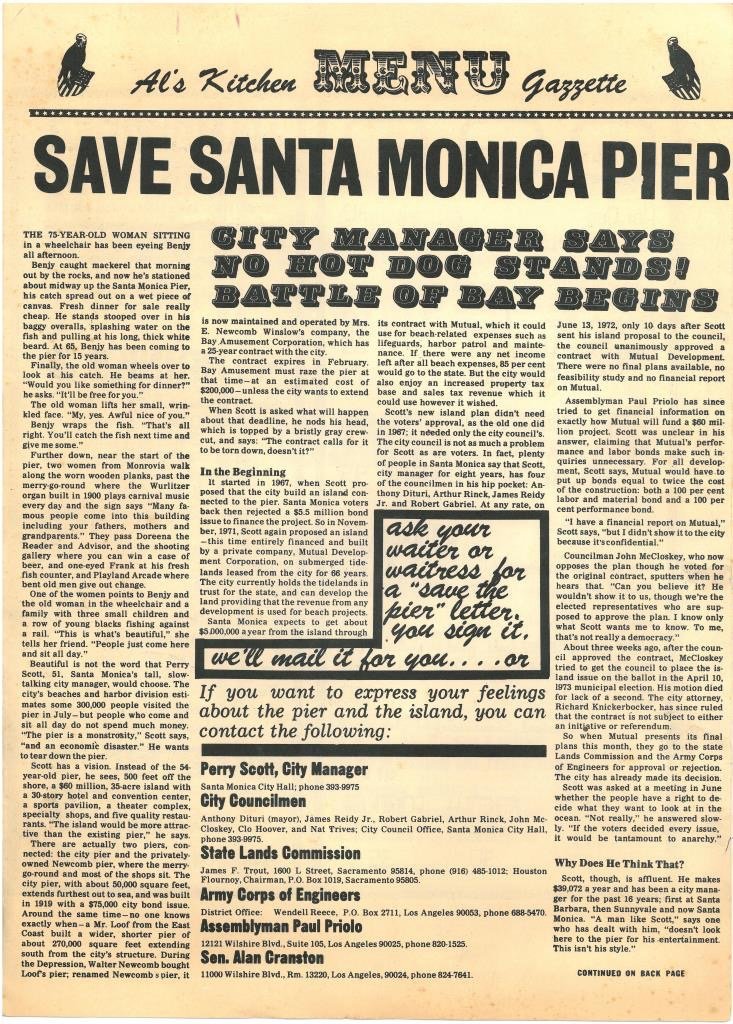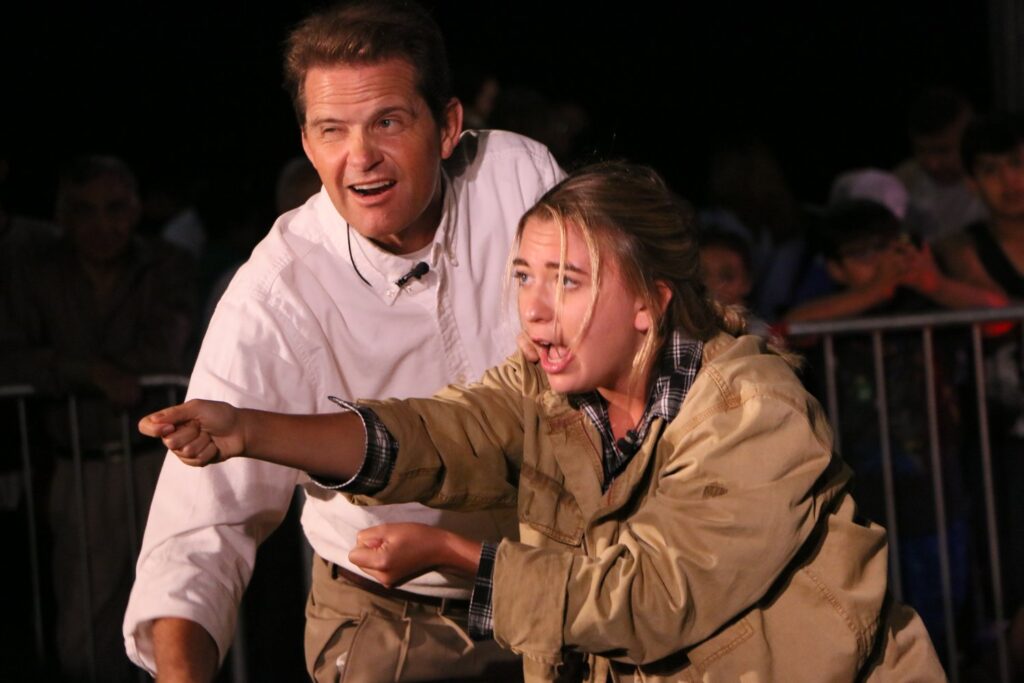Picturing Santa Monica without the Pier is like picturing the Hollywood Hills without the Hollywood Sign or New York without the Empire State Building, but with all the changes that have happened around Santa Monica Bay since 1909, how did this national landmark survive into the 21st century?
The remarkable feat was accomplished thanks to a grassroots movement of locals who launched the Save the Pier campaign 50 years ago to ensure the Pier would survive for future generations to enjoy.
By 1972, the Pier was already in its eighth decade and badly in need of upkeep and repair that came with a hefty price tag for the small and not-so-well-off City of Santa Monica.
City council members at the time believed a fresh start was needed, launching a plan to tear down the aging Pier and replace it with a glamorous resort-style island. But community members believed brighter days were ahead and, in the end, their hard work paid off: the island plan sank and the Pier got a new lease on life.
Santa Monica Pier Corporation Executive Director Jim Harris and another longtime local, Larry Barber, both said many people believe that movement paved the way for other grassroots movements that have taken shape in Santa Monica in the years and decades to follow.
Barber, who began working at Al’s Kitchen on the Pier in the early 1970s, became a community organizer and helped lead Save the Pier.
“People suddenly realized that they could actually accomplish something by joining together in significant numbers,” Barber said in a phone interview with the Daily Press. “I think that’s what … was sort of like an incubation period for then, later on, what the renters’ rights movement said … I would say it definitely was a harbinger of that movement, it seems to me.”
Barber was in his early 30s when the Save the Pier movement was underway, and said many of the other people involved were young, idealistic and just beginning to get involved in local politics.
Harris called the “Battle of the Bay” — the fight to save the Pier — a “changing of the guard in Santa Monica politics” with ramifications still felt in local politics today.
This piece of local history is brought to life each fall with the annual production of “Save the Pier,” a play Harris wrote after conducting years of research for his book “Santa Monica Pier: A Century on the Last Great Pleasure Pier.” Though the theatrical production has been on pause for two years due to the pandemic, “Save the Pier” is back this week for a limited run from Oct. 20-23.
“When the opportunity to write the Pier history book came up in 2007, with the Pier’s centennial coming up in 2009, I leapt at the opportunity and immediately began searching out people who I had heard were around and had wonderful stories,” Harris said.
Harris came to the Pier in 1989 as a bartender at the Boathouse restaurant, amid ongoing repairs following storm damage earlier that decade.
“At the time, the Pier was nothing like it is today,” Harris reflected. For decades, the Pier was a little rough around the edges, attracting tourists but also gang members and homeless people.
“We had 2 million visitors a year,” Harris described. “Two months out of the year, that was summer tourists. And the rest of the year that was, you know, it was homeless and gang activity and then these wonderful people who had made a habit of coming to the Pier every day. There was no amusement park, of course, and the Boathouse Restaurant where I worked was really the cornerstone business on the Pier at the time.”
Harris said watching the Pier evolve over the past 33 years has been fascinating, as was learning about the days before he came to Santa Monica.
“It was really an underdog fight against a decision that kind of made sense by City Hall,” Harris said. “You know, when the Pier was saved, it’s not like they were saving the Pier as we know it today; they were saving something that was broken down, costing the city a lot of money.”
In doing his research, Harris spoke to not only Barber but other organizers who have since died including Diana Cherman, chair of the Save the Santa Monica Pier Citizens’ Committee; Colleen Creedon, a local activist and former Pier resident (who lived above the merry-go-round); and Maynard and Sheila Ostrow, who owned the Pier’s bumper car operations at the time and funded Friends of the Santa Monica Pier.
Barber said he goes to the play each year, and each year it is a little different, with different actors and an ever-changing setting, due to its being outdoors. Since it’s staged in a public area, spectators are often treated to other performances, like fishermen bringing in a catch or, once, a young couple getting engaged, apparently oblivious to the performance steps away.
“When you’re out there, the setting is beautiful because you’re looking out on the ocean and you just have to take whatever weather happens to be visited upon you,” Barber said, “which can either be beautiful or can be windy, chilly, can be cold, depend on whatever’s going on. You’re competing with the elements, which is both good and also a bit risky at times.”
Harris said producing the play on the west end of the Pier is intrinsic to the production.
“I walked out to the end of the Pier one day and sat in the bleachers at the end of the Pier and looked down at the deck and ocean behind it,” Harris recalled while in the midst of writing. “And I visualized a couple of tables on one side and a podium on the other and suddenly you can’t get the Pier out of the play.”
“Save the Pier” will be staged at 7 p.m. each evening from Oct. 20-23 on the steps at the far western end of the Pier. The play is free and open to the public with no tickets required.
emily@smdp.com












